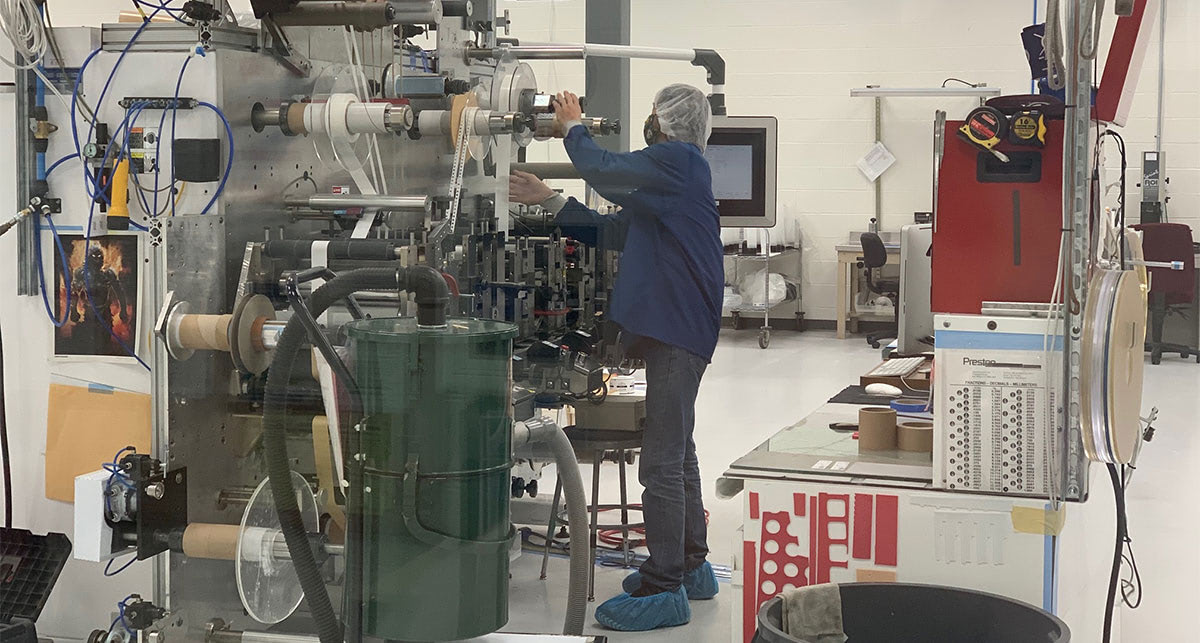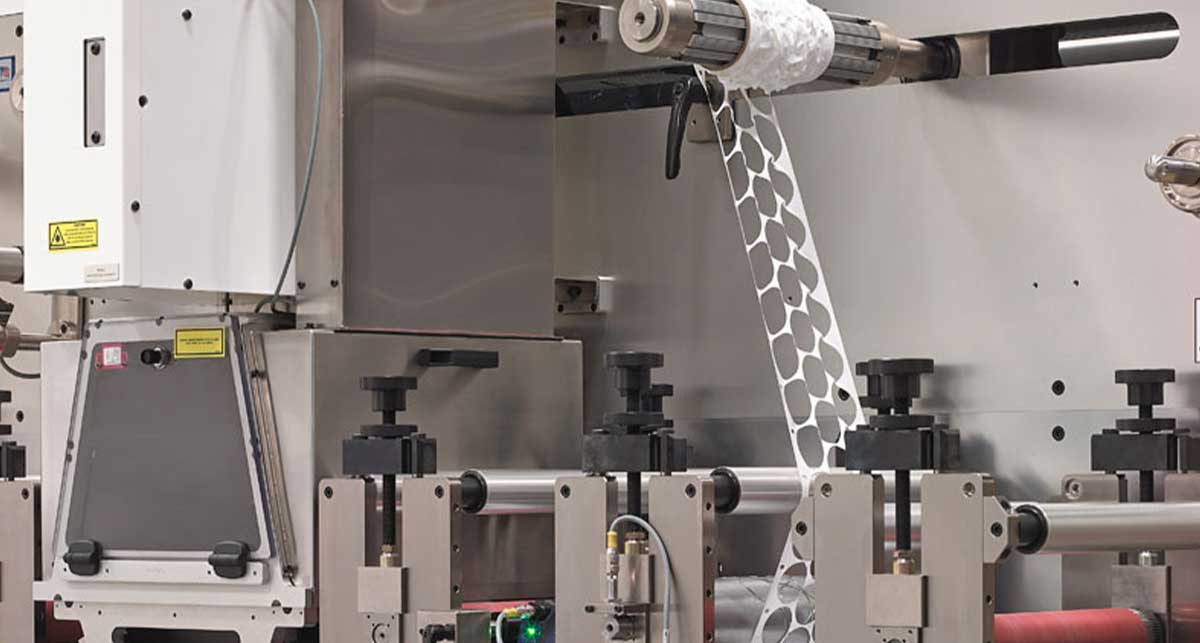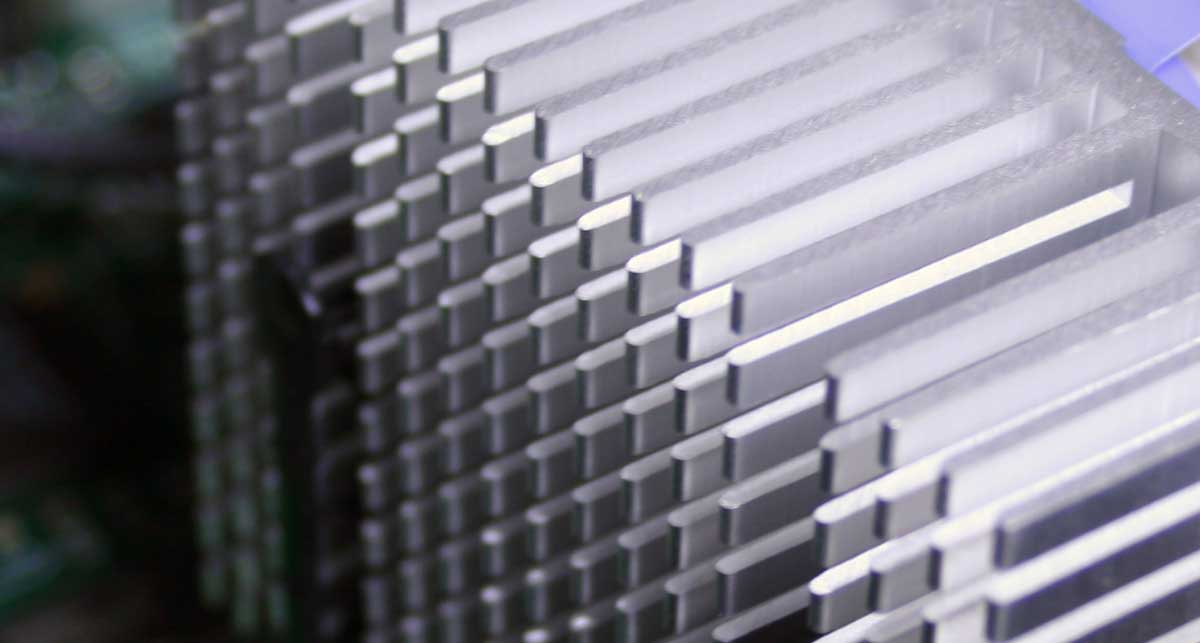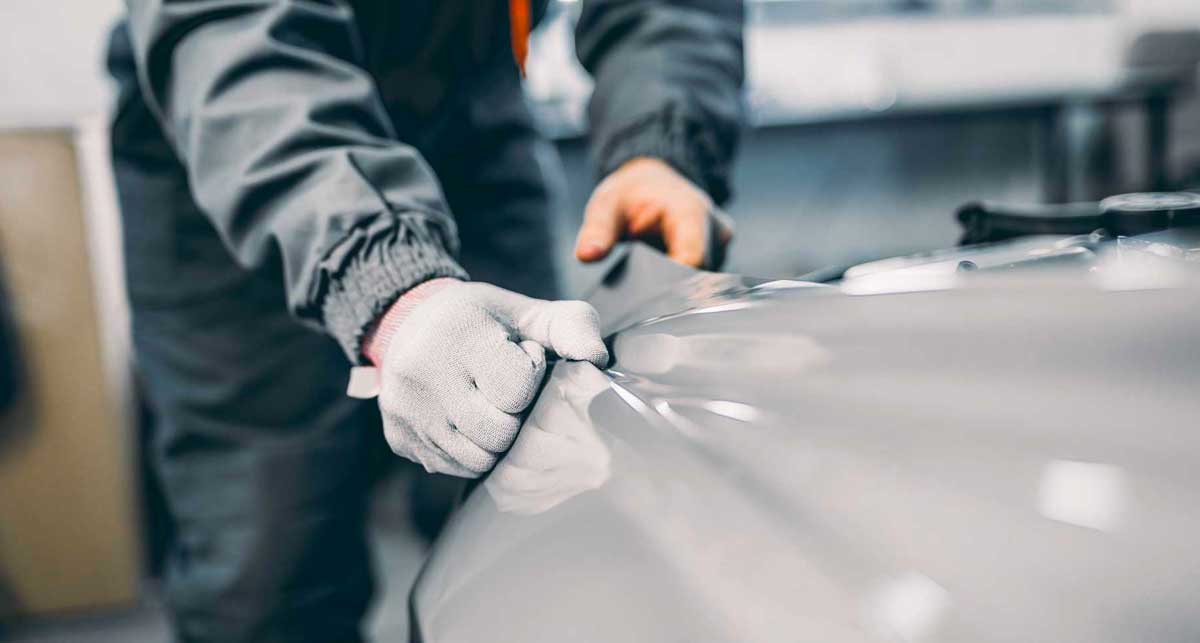You think you’ve finally built the perfect sandwich when you suddenly take a bite and realize there’s nothing inside.
The component between two similar materials often allows the whole unit to succeed. In an electronic device, the thermal interface material ensures the safety and functionality of the other parts. Maybe it’s not as delicious as your perfect sandwich, but it’s equally important.
Having manufactured TIMs in the past, we can confidently recount some of the more common questions we’ve received over the years.
Understanding the different thermal interface options will help you choose the right material for your application. Today, you’ll fully understand the factors determining which (if any) type of thermal interface material suits your needs.
What are Thermal Interface Materials?
Thermal Interface Materials (TIMs) transfer heat between two or more solid surfaces to facilitate thermal management. Modern TIMs include phase change materials, gap fillers, thermal grease, and less compliant materials like thermally conductive hardware, adhesive films, and thermal rubber pads.
Types of Thermal Interface Materials
Since there are so many types of TIM materials (yes, that means material twice), we’ll cover the main categories to give you a general idea of their advantages.
As you learn about each thermal interface material, consider how it might suit your project application needs. Afterward, we’ll cover how they’re applied and what matters in your final decision.
MATERIAL #1: ADHESIVE TAPES
Thermally conductive adhesive tapes have the benefit of being both a part of the thermal management system and the mechanical stability of the structure. Adhesive tapes typically adhere LED lights and semiconductor packages to heat sink surfaces.
Unlike several of the alternative thermal interface materials you’ll see, tapes only require pressure to function. You could also replace mechanical attachment hardware like springs and screws, which reduces your costs and installation time.
MATERIAL #2: PASTES, PUTTIES, GELS, AND GREASES
Thermal pastes, putties, gels, and greases are produced in the fluid state at room temperature. While manufacturers design some products to harden or cure into a rubbery consistency after application, some will remain fluid throughout their working lives.
- Putty is a material applied to increase thicknesses and is used for filling in gaps between irregular or unusual surfaces or those that do not touch one another.
- Grease is usually sold as a non-curing product and applied in thin layers to help reduce thermal resistance between smooth, flat surfaces.
These products are electrically non-conductive. However, some can be designed to be conductive and may cause issues if the bridge nodes in the circuit aren’t meant to be connected.
Unfortunately, depending on the application, several issues may arise. You might wonder, “What can I use instead of thermal paste?” In most cases, a better option is to use pads, tapes, adhesives, or roll goods, as they eliminate the most common problems.
MATERIAL #3: PHASE-CHANGE MATERIALS
Phase-change materials (PCMs) will change from solid to viscous liquid at lower temperatures (usually in the range of 131 to 149°F).
This phase-changing properly allows you to handle and process the materials as a solid at room temperature and maintain the wetting and comfortability properties of fluids at elevated operating temperatures.
PCMs offer attractive benefits compared to grease-state products. They are neater during a manual assembly process, don’t typically suffer from dry-out issues, and can be pre-applied for assembly in the future. This is possible while providing thermal performance similar to grease-state products. Yet PCMs have a lower tolerance for misapplication and cost more.
You can find PCMs in several forms, including bulk rolls, sheets, pre-cut shapes to fit device packages, dispensable fluids, and deodorant-like sticks to provide a rub-on application. After the initial application, the dispensable liquids are designed to harden or dry to a solid phase-changing state.
The shape- and sheet-type products will combine the chosen PCM with other materials to offer desirable properties, including improved structural integrity for easy handling or a reliable electrical insulation characteristic. These products are often classified as “thermal pads.”
MATERIAL #4: POTTING COMPOUNDS AND LIQUID ADHESIVES
Thermal adhesives are specialized glues that withstand heat transfer while holding items together. They can be purchased as pressure-sensitive tapes or sheets or as curing fluids.
A thermal potting compound is primarily designed to provide protective encapsulation while allowing heat transfer from a system’s innards to the outer shell.
Thermal potting compounds can be sold as fluid and have several adhesive and mechanical properties once cured. Some will barely stick to a surface when applied and can be peeled away easily. Others provide moderate adhesion, and some will even offer permanent adhesion.
Certain thermal potting compounds or liquid adhesives will have a rubbery and soft texture when fully cured and are easy to damage or tear, similar to firm cheese. Others will cure almost in an inflexible state.
MATERIAL #5: ADVANCED MATERIALS
One newer type of thermal material is based on pyrolytic graphite, a kind of carbon. These have unusual anisotropic properties, meaning that the substance's properties and direction vary when measured.
The thickness of these sheets allows them to conduct heat just as well as any other TIMs listed. The base material is very flexible and provides moderate electrical conductivity.
Because of their unique characteristics, these graphite-based materials can move heat around in the tight confines of modern consumer devices. They also work in applications where a quality thermal management solution is needed.
Gap Filler: Dimension Considerations
Understanding your application’s dimensions is critical for selecting suitable thermal management materials. The thermal interface is the space between the heat sink and the component, and the thermally conductive media used here is the TMI.
The space is typically small (usually on the micron scale). A gap-filling application has more to do with the distance between a component and the metal housing enclosing the electronics assembly. This is usually measured in millimeters.
In this situation, the thermally conductive material helps minimize the possibility of hot spots in the unit while the casing works as the heat sink.
The difference between a few millimeters and a few microns is critical to the performance of the thermal material you choose. For example, placing the TIM in a gap-filling application will likely be more unstable in the thicker layer, with vibrations or thermal cycling causing displacement.
Also, if you use a gap-filling material for a thermal interface application, it will likely be challenging to achieve a thin, even film. This creates higher thermal resistance at the interface, resulting in minimal heat transfer efficiency.
WHAT MATERIAL IS USED FOR GAP FILLING?
Gap-filling material must be conductive and narrow enough to fit its intended purpose. Many gap fillers are made of silicone because of its variability and ability to function as a thermally conductive material. Still, thermal pads might also have ceramic powder mixed in for better conduction.
What is the Best Thermal Interface Material?
When it comes to choosing the best TIM, the issue of material compatibility is often overlooked as a significant problem in many modern electronic applications.
Yet, there are some situations where material compatibility IS a problem. For example, some humidity and gas sensors may be damaged if exposed to silicone vapors, meaning you’ll want to choose a silicone-based TIM.
Another example is plastic optics and silicone-encapsulated LEDs, which might be damaged when exposed to certain organic vapors. These commonly unforeseen issues are why it’s a good idea to verify the compatibility of the materials with the thermal adhesives you are considering.
THERMAL PAD VS. THERMAL PASTE
Your application and production design will determine your chosen thermally conductive material and any critical performance factors that must be achieved.
For example, deciding between a thermal pad or thermal paste material will depend on whether the heat sink needs to be held in place by the interface material. If so, a bonding compound, like the thermal pad, is the better option. Thermal pads offer the extra benefit of being pre-cut to size to ensure a smoother, quicker application.
However, both options will provide a thicker interface layer and higher thermal resistance. The trade-off comes from the performance requirements of the selected compounds, along with an understanding of the application’s conditions.
IS EPOXY OR RUBBER THERMALLY CONDUCTIVE?
Epoxy and rubber (or silicone rubber) typically have very low thermal conductivity, so they are typically used for bonding devices during electrical insulation or heat dissipation.
How To Apply Thermal Interface Material
The application technique you use depends on the product. A manufacturer may automate the dispensing or screen printing for non-curing and curing products; the main difference is the working time required to cure the material.
For example, if the product dries to the touch quickly, it may not be suitable for stencil printing because the cured product could block the screen.
Usually, a small amount of the material should be applied for gap-filling and thermal interface applications to help ensure maximum heat transfer. The layer must achieve uniform coverage on the whole interface.
When a gap filler is used, the material must be applied while ensuring all the air is expelled since air is a poor conductor of heat and may result in additional hotspots.
If you choose encapsulation resin, you will likely have to cover the entire PCB. The amount of resin you need to apply must balance the desired level of protection and reduce any volume or weight gains from the resin’s application.
Understanding Thermal Interface Material: Now You Know
There is a lot to learn about thermal interface material, but having different options will help you make the proper selection for your application.
Each thermal interface material is unique, and understanding this is the first step to finding the right option.
Most of the time, we’d recommend opting for the more seamless application offered by pads, tapes, and adhesives. This reduces the mess, application hassle, and other issues with gels, putties, and greases.
Remember, though, issues can arise. Working alongside a professional converter can help you achieve the desired outcome for your application.
If you want to learn more about thermal interfaces and other materials, check out our Learning Center. Otherwise, if you need help deciding which materials will work for your application, please contact us at Strouse. We are here to help with your TIM needs, regardless of what you’re building.
Originally published: July 16, 2020
.jpeg?width=290&name=0%20(1).jpeg)






